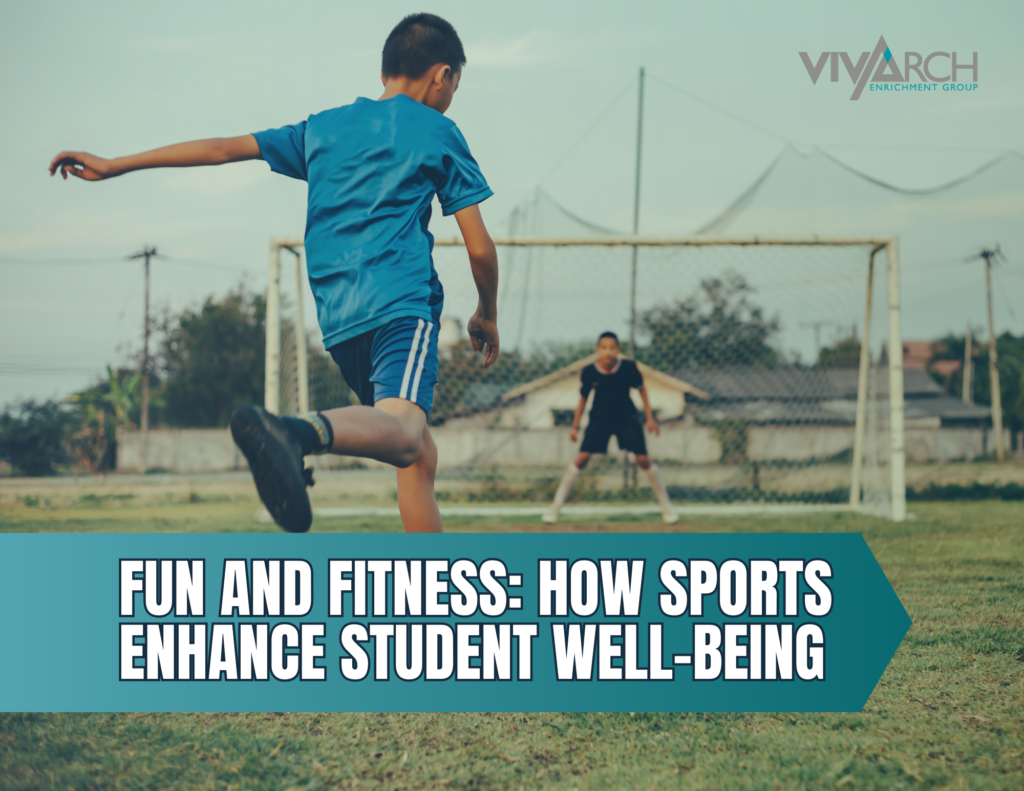Fun and Fitness: How Sports Enhance Student Well-Being

Did you know that playing sports not only keeps students fit but also enhances their overall well-being? It’s true! Engaging in sports activities like dodgeball, speedminton, volleyball, archery, basketball, bowling, athletics, handball, karate, and golf goes beyond physical exercise; it contributes to mental, emotional, and social development.
Explore how fun and fitness through sports can make a significant difference in students’ lives, and why teachers play a crucial role in promoting these activities.
The Physical Health Benefits of Sports
Sports and physical activities offer a myriad of benefits for students’ physical health. When students engage in sports such as dodgeball, speedminton, volleyball, archery, basketball, bowling, athletics, handball, karate, and golf, they are not just having fun; they are also improving their physical fitness. These activities help students stay active, strengthen their muscles and bones, and boost their cardiovascular health.
Moreover, regular participation in sports contributes to maintaining a healthy weight, reducing the risk of chronic conditions such as obesity, diabetes, and heart disease. Teachers can encourage students to embrace sports as a fun way to stay fit, emphasizing the importance of physical activity in leading a healthy lifestyle.
The Mental and Emotional Impact
Beyond the physical benefits, sports also have a profound impact on students’ mental and emotional well-being. Engaging in sports activities releases endorphins, neurotransmitters that promote feelings of happiness and reduce stress and anxiety. This natural mood booster can uplift students’ spirits and contribute to a positive outlook on life.
Sports also provide a platform for students to develop essential life skills such as resilience, discipline, and perseverance. Facing challenges on the field or court teaches students valuable lessons about overcoming obstacles and bouncing back from setbacks. These experiences build confidence and self-esteem, empowering students to tackle academic and personal challenges with courage and determination.
Academic Performance Enhancement
Contrary to common misconceptions, engaging in sports can actually boost academic performance. Active students often exhibit better focus, concentration, and memory retention, leading to improved learning outcomes. Sports also teach valuable time management skills as students learn to balance their academic responsibilities with extracurricular activities, fostering a well-rounded approach to education.
Social Development Through Sports
One of the most significant benefits of sports is the opportunity for social interaction and skill development. Team sports like volleyball, basketball, and handball foster collaboration, communication, and teamwork among students. They learn to work together towards a common goal, respect each other’s strengths and weaknesses, and celebrate collective achievements.
In addition to teamwork, sports also promote sportsmanship and fair play. Students learn the importance of respect, integrity, and honesty, both in victory and defeat. These values extend beyond the sports field, shaping students into responsible and empathetic individuals who value camaraderie and mutual support.
Tips for Teachers: Fostering Fun and Fitness
As teachers, fostering fun and fitness through sports is not just beneficial but also enjoyable. Here are some simple yet effective tips for integrating sports into the classroom and promoting student well-being:
- Variety is Key: Offer a variety of sports activities to cater to diverse interests and abilities among students. Rotate between team sports, individual challenges, and recreational games to keep things exciting and engaging.
- Inclusivity Matters: Ensure that sports activities are inclusive and accessible to all students, regardless of their physical abilities or backgrounds. Provide adaptations and modifications as needed to accommodate everyone’s needs and promote inclusivity.
- Emphasize Fun: Make sports activities enjoyable by focusing on the fun element rather than competition or performance. Encourage students to participate with enthusiasm and celebrate their efforts and achievements, no matter the outcome.
- Teach Life Skills: Use sports as a platform to teach valuable life skills such as resilience, teamwork, leadership, and sportsmanship. Incorporate discussions and reflections on these skills during sports sessions to reinforce their importance.
- Create a Supportive Environment: Foster a supportive and encouraging environment where students feel safe to take risks, make mistakes, and learn from them. Emphasize the process of learning and growth rather than just the final outcome.
Creating a Supportive Environment
To ensure the success of sports programs, it’s essential to create a supportive environment within the school community. This involves providing access to sports facilities and equipment, offering coaching and mentorship opportunities, recognizing and celebrating student achievements in sports, and fostering a culture of inclusivity and sportsmanship. Collaboration with parents, administrators, and community partners can further enhance the impact of sports on student well-being.
Empowering Students Through Sports
Sports play a pivotal role in enhancing student well-being by promoting physical fitness, mental resilience, social skills, and emotional balance. Teachers can harness the power of sports to create a positive and nurturing learning environment where students thrive not just academically but also holistically.
By prioritizing fun and fitness through sports, teachers empower students to lead healthy, active lives and develop lifelong habits of wellness. Together, let’s embrace the joy of play, celebrate the benefits of sports, and nurture the well-being of every student in our care.
Explore How Sports Enhance Student Well-Being and learn more about our available sports programmes.
